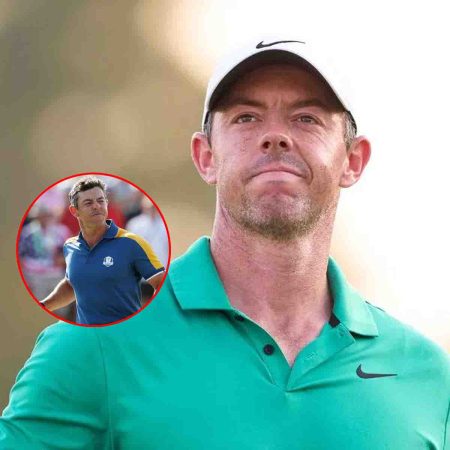Kansas City’s star quarterback shattered a record no one thought could be broken.
When the Kansas City Chiefs won 2022’s NFL championship with a 38-35 victory over the Philadelphia Eagles three weeks ago, quarterback Patrick Mahomes shattered two longstanding Super Bowl records.
Mahomes became the first quarterback to lead the league in passing yards and win the Super Bowl in the same year.
But he also set a new record for the largest salary-cap percentage used for a Super Bowl-winning quarterback. According to the salary-cap site Spotrac, Mahomes’ 2022 cap hit was 17.2%. That figure exceeded the previous record of 13.1% — set by San Francisco 49ers’ quarterback Steve Young back in 1994 — a 4.1-point increase.
:no_upscale()/cdn.vox-cdn.com/uploads/chorus_asset/file/24476585/usa_today_9058213.jpg)
RVR Photos-USA TODAY Sports
Since Young set that mark 28 years ago, two quarterbacks have reached the championship game with higher salary-cap hits: Peyton Manning (18.8% for the Indianapolis Colts in 2009 and 14.2% for the Denver Broncos in 2013) and Matt Ryan (15.3% for the Atlanta Falcons in 2016). But neither quarterback won those championship games.
This evidence — combined with the fact that Young set his record in the first year the league played under the salary cap — led to a longstanding belief: an NFL team couldn’t win the Super Bowl by spending more than 13.1% of its cap space on its quarterback.
In an Arrowhead Pride FanPost published on the eve of the 2022 season, AP user PBryde laid out the argument.
“Tom Brady’s cap hit averaged 7.8% during his seven Super Bowl wins without exceeding the 13.1% threshold. The one year he exceeded the threshold, he didn’t win the championship. He’s considered the GOAT — in part — because he ironically supported his own great defenses.
“Peyton Manning should be re-named Pay-a-Ton. He exceeded 13.1% eight times and didn’t win it once during those years. The two seasons he won it all? You guessed it: he was below the 13.1% threshold.”
While it was universally understood that a quarterback — as the team’s most important player — could easily have the highest cap hit, the relative size of that figure remained important.
“Of the QBs that have earned rings, in 13 of the [27] years [(48.1%)], they were the biggest salary cap hit on the roster,” noted Adam Thompson on Bookies.com last July. “In five more years. the QB on the team ranked No. 2 and in three more they were No. 3.
“In total, [78%] of the time the winning QB is top three in salary on his team. All but two QBs were at least top 10.”
/cdn.vox-cdn.com/uploads/chorus_image/image/72034958/usa_today_19984614.0.jpg)
As PBryde explained in his FanPost, most of the rest have tended to be quarterbacks on rookie contracts.
“Many great quarterbacks won it early in their careers — usually under their rookie contracts. Then they signed for big money — only to never see the confetti drop again. Think of Russell Wilson winning at 0.6% in his second year. Drew Brees was at 8.3% in his third year with the New Orleans Saints. Brett Favre and Aaron Rogers both won it once with the Green Bay Packers. But after going over the threshold, neither raised the Lombardi again.”
Thompson concluded that the “ideal” range for a quarterback’s cap hit was between 10.6% and 12.3%.
“Amazingly, only two QBs are in that range for 2022,” he observed. “Both of them are suiting up for contenders. Wilson, traded to the Denver Broncos this offseason, is a $24 million cap hit. Lamar Jackson is at $23 million for the Baltimore Ravens.
“It may be a good bet to consider one of those teams if planning an early NFL betting wager on the Super Bowl 57 winner.”
While Thompson turned out to be dead wrong about that, his logic appeared sound: if too much of a team’s salary cap is tied up in its quarterback, the team won’t have enough money to “surround the quarterback with weapons” or “build a winning team around him.”
So here’s the question: was Super Bowl LVII an outlier — or a sign of things to come in Kansas City?
:no_upscale()/cdn.vox-cdn.com/uploads/chorus_asset/file/24476594/1470370053.jpg)
Photo by Focus on Sport/Getty Images
Of course, part of the reason the team succeeded while spending so much for its quarterback is Mahomes himself. With each passing season, he finds more ways to show how he is the team’s outlier.
But none of this would have been possible without the contributions of general manager Brett Veach and head coach Andy Reid, either. Veach (and his personnel staff) have nailed the last two drafts. Reid (and his assistant coaches) were able to get immediate contributions from a high percentage of their first-year players in each of the last two seasons. In the Super Bowl, the 47-man gameday roster included 10 rookies, which was 21.7%. Just one other NFL champion from the salary-cap era had a higher percentage of rookies on its gameday roster.
In 2023, Mahomes’ cap hit will account for 22.1% of cap dollars — but as the limit continues to rise, Spotrac now estimates the quarterback’s share will fall to 17.7% in 2024, 13.4% in 2025 and 8.5% in 2026.
This suggests that the team will still need to bring in young, inexpensive talent for at least the next couple of seasons — but after that, more cap dollars will be available. If the team continues to win while putting young players on the field, that money could be used to restructure Mahomes’ deal — but if not, some of it could be used to finance contract extensions for some of the young stars the team has recently acquired.
Either way, it looks like the Chiefs will continue to be contenders — and Mahomes will continue to destroy records no one thought could be broken.
Source: arrowheadpride.com







